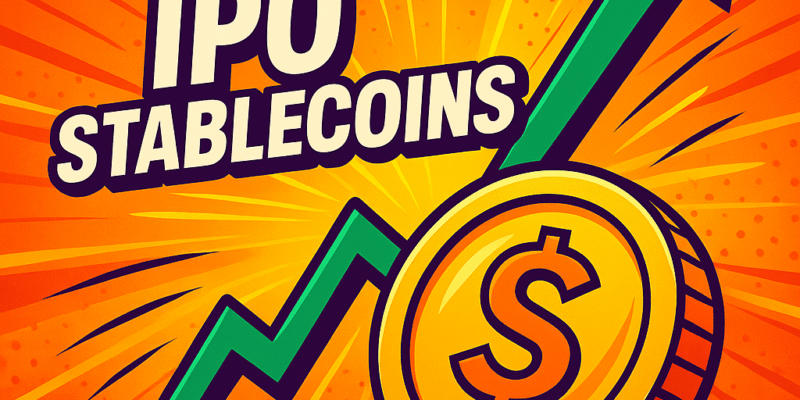When a company goes public on the New York Stock Exchange, the script is usually familiar, investors pay in cash, banks handle settlement, and the company walks away with billions in traditional currency. Last week, Bullish a digital asset exchange flipped that script. Instead of collecting dollars wired through Wall Street banks, it received all $1.15 billion of its IPO proceeds in stablecoins.
For people outside finance, that might sound like a small technical detail. In reality, it is a milestone. This was the first time a U.S. IPO settled entirely in digital tokens tied to the value of real-world money. That means stablecoins once seen as niche crypto tools, just handled the flow of billions in one of the most traditional arenas of finance.
So how did it work? Most of the funds arrived in USDC, a dollar-backed stablecoin, minted on the Solana blockchain. Other stablecoins joined the mix too, from Ripple’s RLUSD to PayPal’s PYUSD and even euro-backed tokens like Circle’s EURC. To keep everything secure, Bullish entrusted Coinbase with custody of the digital assets. The logistics were overseen by Jefferies, the investment bank that helped run the deal.
This choice was not about making a splash for crypto insiders alone. It highlighted the practical side of stablecoins: they move fast, they settle instantly, and they provide a transparent on-chain trail. Compared with bank wires that can take days and cut across time zones, stablecoins clear in minutes. For a company raising over a billion dollars, that speed and clarity matter.
Of course, the IPO itself was dramatic. Bullish priced its shares at $37, raising about $1.1 billion at launch and valuing the firm at around $5.4 billion. On its debut day, the stock soared before cooling, reminding everyone that market excitement still plays by old rules, even when settlement is new.
What makes this moment stand out is how relatable it actually is. Anyone who has ever been frustrated by a slow bank transfer, or paid extra fees just to move money across borders, can see the appeal of faster, cheaper settlement. Stablecoins are not some abstract crypto experiment—they are digital versions of money that can do what banks do, but quicker and more efficiently.
There are still questions. Regulators are working on rules to ensure stablecoins remain fully backed and secure. Companies must weigh risks like issuer credibility and blockchain reliability. But this IPO proves something simple: stablecoins are no longer sitting on the sidelines. They are stepping directly into the heart of global finance.
Bullish Received $1.15B of IPO Proceeds in Stablecoins, and in doing so, it wrote a new chapter for how companies can raise money, blending Wall Street traditions with blockchain’s efficiency.

Comments